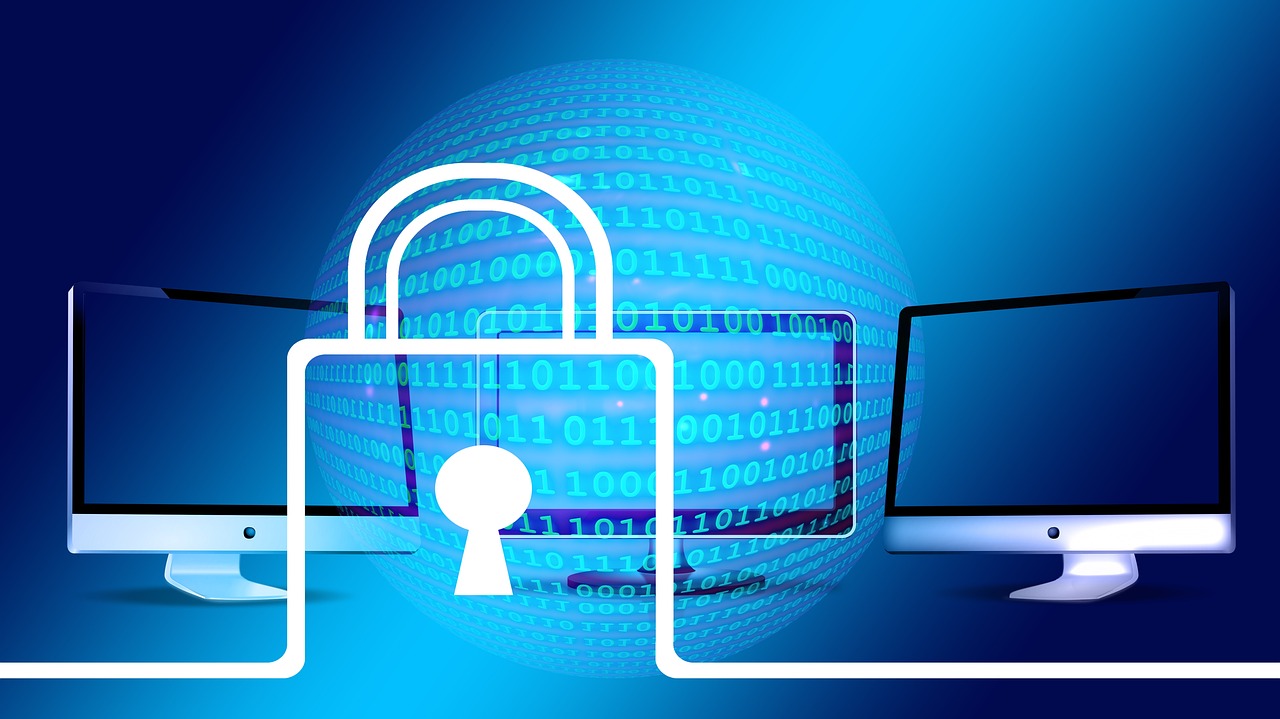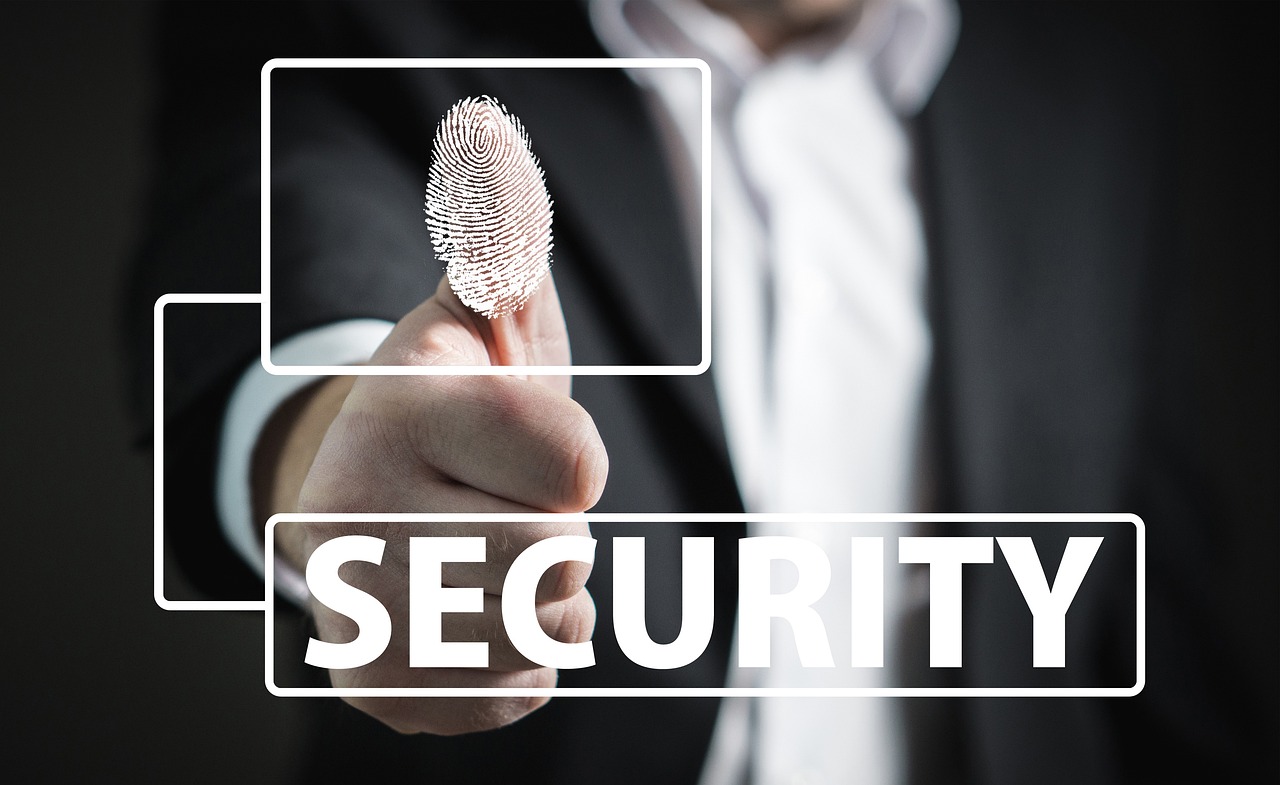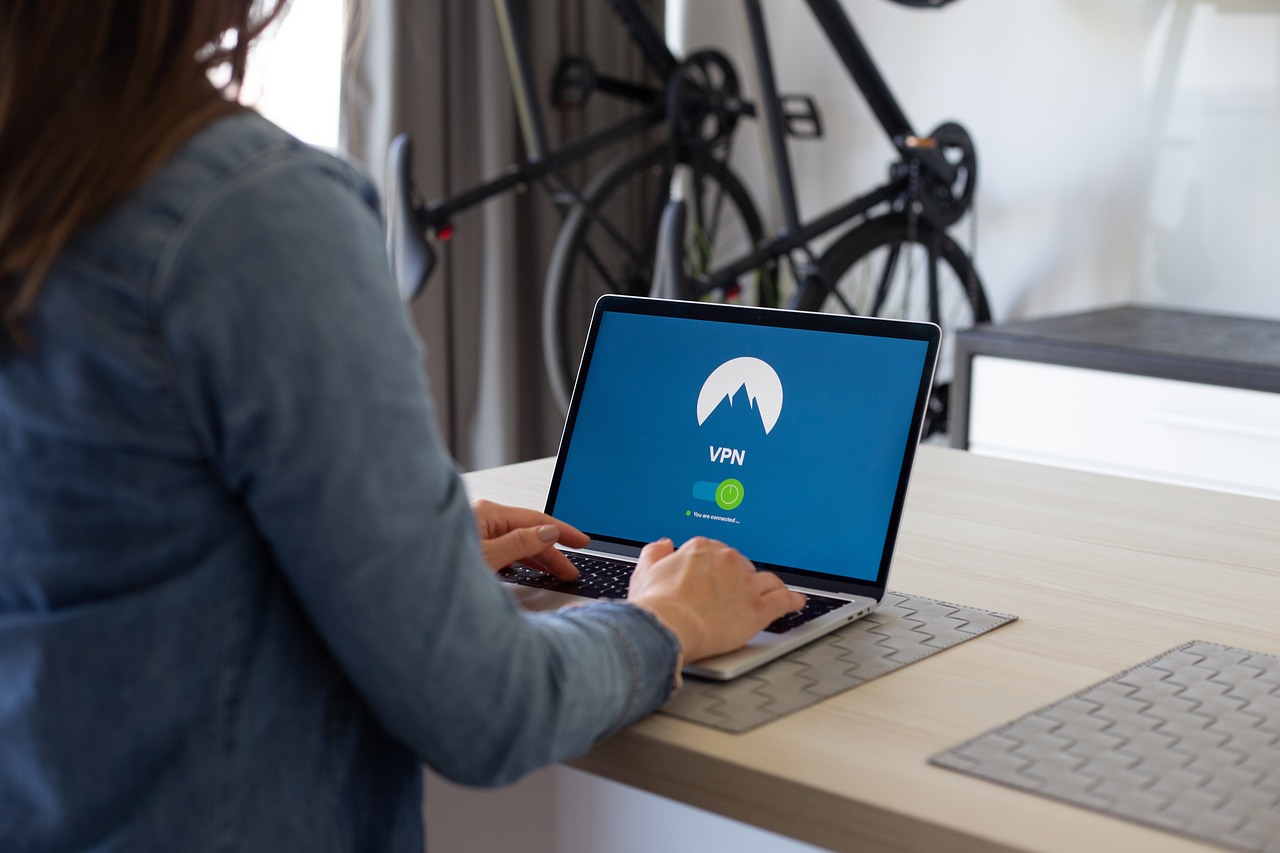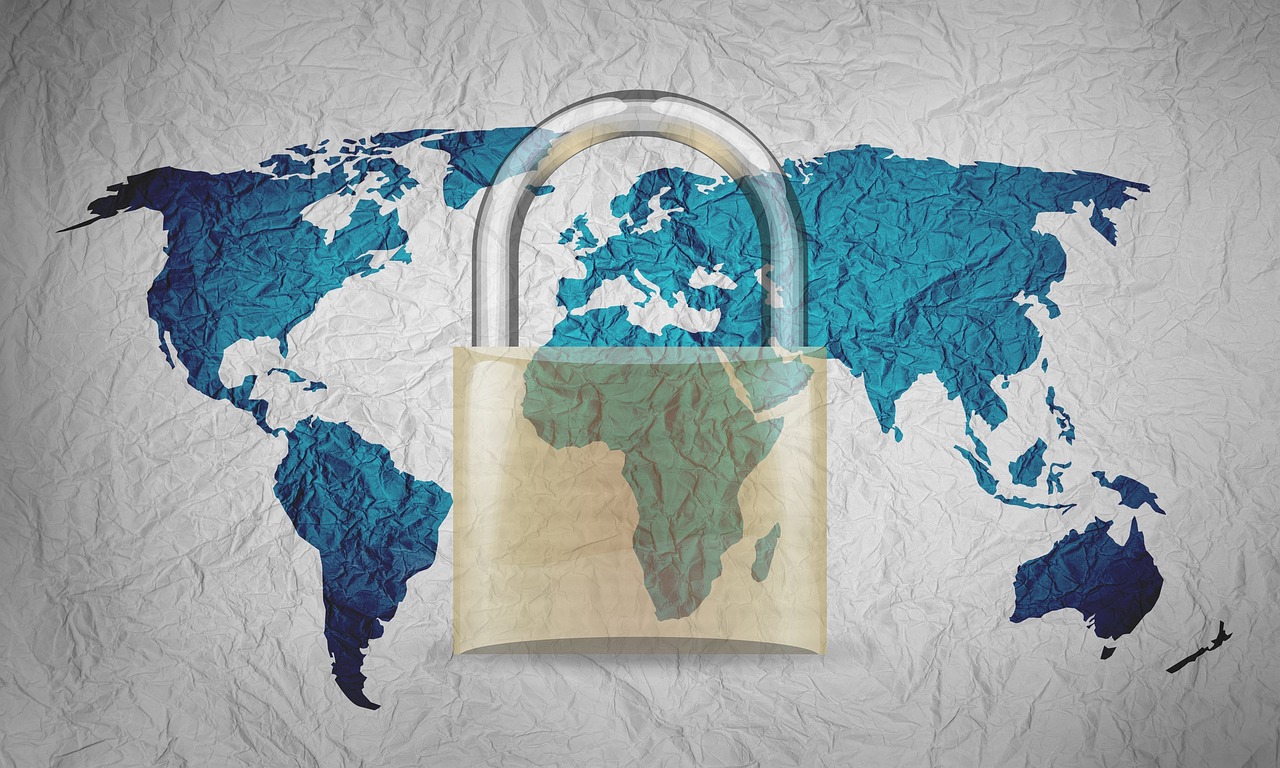How to Protect Your Digital Assets from Hacks
In today's digital age, our lives are intertwined with technology, making it crucial to protect our digital assets from an ever-evolving landscape of cyber threats. With the rise of online banking, social media, and cryptocurrencies, we find ourselves holding a treasure trove of personal and financial information that hackers covet. So, how can we safeguard these valuable assets? The answer lies in understanding the threats we face and implementing proactive measures to shield ourselves from potential breaches.
Imagine your digital assets as a vault filled with precious jewels. Would you leave the vault door wide open, trusting that no one would dare to take a peek? Of course not! Just as you would secure a physical vault, you must take steps to fortify your digital presence. This involves not only recognizing the types of threats that exist but also being equipped with the right tools and knowledge to combat them.
First, let's delve into what constitutes a digital asset. Digital assets can range from your cryptocurrency investments and online bank accounts to your social media profiles and important documents stored in the cloud. Each of these assets holds value, and if compromised, the consequences can be devastating. For instance, imagine waking up one day to find your bank account drained or your identity stolen. The emotional and financial toll can be overwhelming, making it imperative to take action now.
One of the most common types of cyber threats is phishing. These attacks often come in the form of deceptive emails or messages that trick users into revealing sensitive information, such as passwords or credit card numbers. Recognizing the signs of a phishing attempt is crucial. Look out for poor grammar, generic greetings, and suspicious links. If something feels off, trust your instincts and double-check before clicking on anything.
In addition to phishing, malware and ransomware are significant threats that can wreak havoc on your digital life. Malware can infiltrate your system, compromising your data and privacy, while ransomware can lock you out of your files until you pay a hefty ransom. To combat these threats, it’s essential to keep your software updated and employ robust security measures, such as strong passwords and two-factor authentication.
Speaking of passwords, let’s talk about the importance of creating strong, unique passwords for each of your accounts. Think of your password as the key to your digital vault. If your key is weak, it’s much easier for someone to break in. Using a password manager can help you maintain complex passwords without the hassle of remembering them all. These tools not only store your passwords securely but also generate new ones that are difficult to crack.
Another layer of security you can implement is two-factor authentication (2FA). By requiring a second form of verification—such as a text message code or a fingerprint scan—2FA makes it significantly more challenging for hackers to gain access to your accounts. It’s like having a second lock on your vault; even if someone has your key, they still can’t get in without that additional piece of verification.
Moreover, keeping your software and applications up to date is essential for protecting your digital assets. Regular updates often include security patches that address vulnerabilities hackers exploit. Think of these updates as maintenance checks for your vault, ensuring it remains secure against new threats. Automating your updates can streamline this process, ensuring you always have the latest security features without needing to remember to perform manual updates.
As we navigate through this digital landscape, it’s important to stay vigilant and proactive in protecting our digital assets. By understanding the threats we face and employing effective strategies, we can significantly reduce the risk of falling victim to cyber attacks. Remember, your digital assets are valuable, and taking the necessary steps to protect them is not just wise; it’s essential.
- What are digital assets?
Digital assets include anything stored digitally, such as cryptocurrencies, social media accounts, and online files. - How can I identify phishing emails?
Look for poor grammar, generic greetings, and suspicious links. Always verify the sender's information. - What is two-factor authentication?
It’s an extra layer of security that requires a second form of verification in addition to your password. - Why are software updates important?
Updates often include security patches that fix vulnerabilities, making it harder for hackers to exploit your devices.

Understanding Digital Assets
This article explores effective strategies for safeguarding your digital assets against cyber threats, ensuring your personal and financial information remains secure in an increasingly digital world.
In today's fast-paced digital landscape, digital assets have become a vital part of our lives. But what exactly are they? Digital assets encompass a wide range of online properties, from cryptocurrencies and social media accounts to digital files and intellectual property. Understanding the significance of these assets is crucial, especially as we navigate the complexities of the internet.
Consider your social media profile. It’s not just a collection of pictures and posts; it’s a representation of your identity, your connections, and even your brand. Similarly, cryptocurrencies like Bitcoin or Ethereum are not just digital coins; they are investments that can fluctuate in value. Each of these assets holds personal, financial, and emotional value, which makes them prime targets for cybercriminals.
To illustrate the importance of safeguarding these assets, let’s break down a few common types:
- Cryptocurrencies: Digital currencies that require secure wallets and transactions.
- Social Media Accounts: Platforms that can be hacked to spread misinformation or steal personal data.
- Digital Files: Documents, photos, and videos that could be lost or compromised if not properly secured.
As we delve deeper into the realm of digital assets, it’s essential to recognize that their value is not only monetary. They can represent years of hard work, creativity, and personal expression. Therefore, protecting these assets should be a priority for everyone.
In essence, understanding digital assets is about appreciating their significance in our lives and recognizing the risks associated with them. This understanding lays the groundwork for implementing effective protection measures, allowing you to navigate the digital world with confidence and security.
Cyber threats come in various forms, such as phishing, malware, and ransomware. Recognizing these threats is essential for developing a robust defense strategy to protect your digital assets.
Phishing attacks involve deceptive emails or messages aimed at tricking users into revealing sensitive information. Awareness and education are vital in identifying and avoiding these scams.
Knowing the signs of phishing emails, such as poor grammar and suspicious links, can help users avoid falling victim to these attacks, protecting their digital assets.
Implementing best practices, such as verifying sender information and avoiding clicking on unknown links, can significantly reduce the risk of phishing attacks.
Malware and ransomware pose significant threats to digital assets by compromising data and demanding payment for recovery. Understanding how to prevent and respond to these threats is crucial.
Creating strong, unique passwords for each account is a fundamental step in protecting digital assets. Password management tools can help users maintain security without sacrificing convenience.
Password managers securely store and generate complex passwords, making it easier to manage multiple accounts while enhancing overall security against unauthorized access.
Two-factor authentication adds an extra layer of security by requiring a second form of verification, making it significantly more difficult for hackers to gain access to your accounts.
Keeping software and applications up to date is essential for protecting digital assets. Regular updates often include security patches that address vulnerabilities exploited by hackers.
Regular software updates help close security gaps, ensuring that your devices are equipped with the latest protections against emerging cyber threats.
Automating software updates can streamline the process, ensuring that you always have the latest security features without needing to remember to perform manual updates.
Q1: What are digital assets?
A1: Digital assets refer to online properties such as cryptocurrencies, social media accounts, and digital files that hold personal, financial, or emotional value.
Q2: How can I protect my digital assets?
A2: You can protect your digital assets by using strong passwords, enabling two-factor authentication, keeping software updated, and being aware of common cyber threats.
Q3: What is phishing?
A3: Phishing is a cyber attack where criminals use deceptive emails or messages to trick individuals into revealing sensitive information.
Q4: Why are software updates important?
A4: Software updates often contain security patches that protect against vulnerabilities exploited by hackers, making them crucial for safeguarding your digital assets.

Common Types of Cyber Threats
In today's digital age, understanding the landscape of cyber threats is more crucial than ever. With the increasing reliance on technology for personal and financial transactions, the risks associated with cybersecurity breaches have escalated. Cyber threats manifest in various forms, each designed to exploit vulnerabilities in our digital lives. By familiarizing ourselves with these threats, we can better prepare and protect our digital assets.
One of the most prevalent forms of cyber threats is phishing. This deceptive practice involves tricking individuals into providing sensitive information, such as passwords or credit card numbers, by masquerading as a trustworthy entity. Phishing can occur through emails, text messages, or even phone calls. For instance, a user might receive an email that appears to be from their bank, urging them to verify their account details. Recognizing these tactics is vital for safeguarding your information.
Another significant threat comes from malware, which refers to malicious software designed to infiltrate and damage computers or networks. Malware can take many forms, including viruses, worms, and Trojans. Once installed on a device, it can steal data, corrupt files, or even hold information hostage, leading to potential financial loss. In fact, ransomware, a specific type of malware, has gained notoriety for its ability to encrypt files and demand a ransom for their release. This threat exemplifies the importance of having robust security measures in place.
To provide a clearer picture, let’s take a look at some common types of cyber threats:
| Type of Threat | Description |
|---|---|
| Phishing | Deceptive attempts to obtain sensitive information by pretending to be a trustworthy source. |
| Malware | Malicious software that can disrupt, damage, or gain unauthorized access to computer systems. |
| Ransomware | A type of malware that encrypts files and demands payment for their decryption. |
| Spyware | Software that secretly monitors user activity and gathers personal information. |
Understanding these threats is just the first step. It’s essential to stay informed about how they evolve and the tactics cybercriminals use. For instance, social engineering is a method where attackers manipulate individuals into divulging confidential information. This could involve impersonating a colleague or creating a sense of urgency to prompt hasty actions. By recognizing these tactics, you can arm yourself with the knowledge needed to defend against them.
Moreover, it’s not just about identifying threats; adopting a proactive approach is key. Regularly educating yourself and your loved ones about the latest scams and security measures can make a significant difference. Remember, in the digital world, an ounce of prevention is worth a pound of cure. The more you know about these common cyber threats, the better equipped you will be to protect your digital assets and maintain your online security.
- What should I do if I think I’ve been a victim of phishing? Immediately change your passwords and notify your bank or relevant authorities.
- How can I tell if my computer has malware? Look for unusual behavior like slow performance, unexpected pop-ups, or unfamiliar programs.
- Is using public Wi-Fi safe for accessing sensitive information? It's risky; avoid using public Wi-Fi for financial transactions without a VPN.

Phishing Attacks
Phishing attacks are like the wolves in sheep's clothing of the digital world. They disguise themselves as trustworthy entities, often appearing in the form of emails, messages, or even phone calls, all with the intent of tricking you into handing over your sensitive information. Imagine receiving an email that looks just like it’s from your bank, urging you to click a link to verify your account details. It’s alarming how easily one can be lured into this trap. The reality is, these attacks are becoming increasingly sophisticated, making it essential for everyone to be vigilant.
So, how do you identify these sneaky phishing attempts? Here are some common signs to watch out for:
- Poor Grammar and Spelling: Legitimate organizations usually have professional communication. If you spot awkward phrasing or typos, think twice.
- Suspicious Links: Hover over links to see where they lead before clicking. If the URL looks strange or doesn’t match the company’s official website, it’s a red flag.
- Urgency and Threats: Phishing emails often create a sense of urgency, claiming your account will be suspended if you don’t act immediately. This is a tactic to rush you into making mistakes.
Being aware of these signs is just the beginning. Education is your best defense. Regularly discussing phishing scams with friends and family can help spread awareness. Remember, even the most tech-savvy individuals can fall victim to these attacks if they’re not careful. It’s like walking through a crowded market—staying alert and being aware of your surroundings can keep you safe from pickpockets.
Ultimately, the best way to protect yourself is to verify any unexpected communication. If you receive a suspicious email from your bank, don’t click on the links. Instead, visit their official website directly or call their customer service to confirm the message's authenticity. This simple step can save you from a potential disaster.
Q: What should I do if I think I've fallen for a phishing scam?
A: If you suspect you've been scammed, immediately change your passwords and enable two-factor authentication on your accounts. Contact your bank or credit card company to report the incident and monitor your accounts for any unauthorized transactions.
Q: Can phishing attacks happen via text messages?
A: Yes, phishing can occur through SMS, often referred to as "smishing." Be cautious of any unexpected messages asking for personal information or urging you to click on links.
Q: Are there tools to help identify phishing attempts?
A: Yes! Many email providers have built-in spam filters that can help identify phishing attempts. Additionally, browser extensions are available that can warn you about suspicious websites.

Identifying Phishing Emails
This article explores effective strategies for safeguarding your digital assets against cyber threats, ensuring your personal and financial information remains secure in an increasingly digital world.
Digital assets encompass various forms of online property, including cryptocurrencies, social media accounts, and digital files. Understanding their significance is crucial for implementing effective protection measures.
Cyber threats come in various forms, such as phishing, malware, and ransomware. Recognizing these threats is essential for developing a robust defense strategy to protect your digital assets.
Phishing attacks involve deceptive emails or messages aimed at tricking users into revealing sensitive information. Awareness and education are vital in identifying and avoiding these scams.
Identifying phishing emails can be challenging, especially since cybercriminals are constantly refining their tactics. However, there are several telltale signs that can help you spot these malicious attempts:
- Suspicious Sender: Always check the sender's email address. Phishing emails often come from addresses that look similar to legitimate ones but may have slight variations.
- Poor Grammar and Spelling: Professional organizations usually maintain a high standard of communication. If an email is riddled with grammatical errors or awkward phrasing, it could be a phishing attempt.
- Urgency or Threats: Phishing emails often create a sense of urgency, claiming that immediate action is required to avoid dire consequences. This tactic is designed to provoke hasty decisions.
- Unusual Links or Attachments: Be wary of links that don’t match the context of the email. Hover over links to see the actual URL before clicking, and avoid downloading any attachments from unknown sources.
By staying vigilant and recognizing these signs, you can significantly reduce the risk of falling victim to phishing attacks. Remember, if something seems off, it’s always better to err on the side of caution and verify the authenticity of the email before taking any action.
Implementing best practices, such as verifying sender information and avoiding clicking on unknown links, can significantly reduce the risk of phishing attacks.
Malware and ransomware pose significant threats to digital assets by compromising data and demanding payment for recovery. Understanding how to prevent and respond to these threats is crucial.
Creating strong, unique passwords for each account is a fundamental step in protecting digital assets. Password management tools can help users maintain security without sacrificing convenience.
Password managers securely store and generate complex passwords, making it easier to manage multiple accounts while enhancing overall security against unauthorized access.
Two-factor authentication adds an extra layer of security by requiring a second form of verification, making it significantly more difficult for hackers to gain access to your accounts.
Keeping software and applications up to date is essential for protecting digital assets. Regular updates often include security patches that address vulnerabilities exploited by hackers.
Regular software updates help close security gaps, ensuring that your devices are equipped with the latest protections against emerging cyber threats.
Automating software updates can streamline the process, ensuring that you always have the latest security features without needing to remember to perform manual updates.
Q: What should I do if I suspect I've received a phishing email?
A: If you suspect a phishing email, do not click on any links or download attachments. Instead, verify the sender's email address and contact the organization directly using official contact information to confirm the email's legitimacy.
Q: How can I create a strong password?
A: A strong password should be at least 12 characters long, include a mix of uppercase and lowercase letters, numbers, and special symbols. Avoid using easily guessed information like birthdays or common words.
Q: Is two-factor authentication really necessary?
A: Yes! Two-factor authentication adds an important layer of security. Even if someone obtains your password, they would still need the second form of verification to access your account.

Best Practices for Avoiding Phishing
In today’s digital landscape, where cyber threats lurk around every corner, it’s imperative to arm yourself with effective strategies to avoid phishing attacks. Phishing is not just a buzzword; it’s a real danger that can lead to the compromise of your sensitive information. So, how can you protect yourself? First and foremost, always verify the sender of any email or message that requests personal information. If something feels off, trust your instincts—don’t engage.
Another crucial step is to look for red flags. Phishing emails often contain poor grammar, spelling mistakes, or generic greetings like “Dear Customer.” Legitimate companies usually address you by your name. Additionally, be wary of links. Instead of clicking directly on links in emails, hover over them to see the actual URL. If it looks suspicious or doesn’t match the company's official website, don’t click it!
Furthermore, it’s wise to enable security features offered by your email service. Most platforms have options to filter spam or suspicious emails automatically. This can significantly reduce the chances of phishing emails landing in your inbox. You can also report phishing attempts to your email provider, helping to improve their filters and protect others.
Lastly, consider educating yourself and your loved ones about phishing tactics. Knowledge is power! Many organizations offer training sessions or resources that can help you recognize and avoid these scams. By staying informed, you can better protect your digital assets and maintain your peace of mind.
To summarize, here are some best practices for avoiding phishing:
- Verify the sender: Always check the sender's email address.
- Look for red flags: Be cautious of poor grammar and generic greetings.
- Hover over links: Check URLs before clicking.
- Enable email security features: Use spam filters and report phishing attempts.
- Educate yourself: Stay informed about phishing tactics and scams.
By following these best practices, you can significantly reduce your risk of falling victim to phishing attacks. Remember, staying vigilant is your best defense against these cyber threats!
1. What is phishing?
Phishing is a cyber attack that attempts to trick individuals into providing sensitive information, such as usernames, passwords, or credit card details, often through deceptive emails or messages.
2. How can I identify a phishing email?
Look for signs like poor grammar, generic greetings, and suspicious links. Always verify the sender's email address before taking any action.
3. What should I do if I receive a phishing email?
Do not click any links or provide any information. Instead, report the email to your email provider and delete it immediately.
4. Can I protect myself from phishing attacks?
Yes! By following best practices such as verifying senders, using email security features, and educating yourself about phishing tactics, you can significantly reduce your risk.
5. What is two-factor authentication?
Two-factor authentication (2FA) is an additional security layer that requires not only a password but also a second form of verification, making it harder for unauthorized users to gain access to your accounts.

Malware and Ransomware
In today's digital landscape, malware and ransomware are two of the most notorious cyber threats that can wreak havoc on your digital assets. But what exactly are they, and why should you be concerned? Simply put, malware is a broad category of malicious software designed to infiltrate and damage your devices, while ransomware specifically locks your files and demands a ransom for their release. Imagine waking up one morning to find that your precious family photos, important documents, and even your work files have been held hostage by a cybercriminal. It's a nightmare scenario that can happen to anyone, and understanding how to prevent and respond to these threats is crucial.
Malware can take various forms, including viruses, worms, trojans, and spyware. Each type has its unique way of infiltrating your system, but they all share a common goal: to compromise your data and privacy. Ransomware, on the other hand, often spreads through phishing emails or malicious downloads, encrypting your files and demanding payment in exchange for a decryption key. The stakes are high, and the emotional toll can be devastating.
To defend against these threats, it's essential to adopt a multi-layered approach. Here are some effective strategies to keep your digital assets safe:
- Install Antivirus Software: A reliable antivirus program can detect and eliminate malware before it causes harm. Regularly updating this software ensures it can combat the latest threats.
- Be Cautious with Downloads: Always verify the source of any software or files you download. If something seems off, it’s best to avoid it altogether.
- Regular Backups: Backing up your data regularly can be a lifesaver. In case of a ransomware attack, having a backup means you won't have to pay the ransom to regain access to your files.
It's also important to stay informed about the latest cyber threats. Cybercriminals are constantly evolving their tactics, and being aware of new trends can help you stay one step ahead. For instance, some ransomware variants now threaten to leak your data publicly if you refuse to pay, adding another layer of intimidation. This highlights the importance of not only securing your devices but also understanding the potential ramifications of an attack.
In summary, malware and ransomware are serious threats that can disrupt your life and compromise your digital assets. By implementing proactive measures and staying vigilant, you can significantly reduce your risk and protect what matters most. Remember, the best defense is a good offense, so invest time in securing your digital life today!
What is the difference between malware and ransomware?
Malware is a broad term that refers to any malicious software designed to harm or exploit any programmable device, service, or network. Ransomware is a specific type of malware that encrypts your files and demands payment for their release.
How can I tell if my computer has been infected with malware?
Signs of malware infection can include slow performance, frequent crashes, unexpected pop-ups, and new programs appearing that you didn’t install. If you notice these symptoms, it's wise to run a malware scan.
Can I recover my files if I fall victim to ransomware?
In some cases, if you have a backup of your files, you can restore them without paying the ransom. However, if you don't have a backup, paying the ransom does not guarantee that you will regain access to your files.
What should I do if I suspect a malware infection?
If you suspect that your device is infected, immediately disconnect it from the internet, run a full antivirus scan, and follow the software’s instructions to remove any detected threats.

Implementing Strong Passwords
In today's digital landscape, where cyber threats loom large, is not just a good practice; it's a necessity. Think of your password as the key to your digital home. Would you leave the front door wide open with just a flimsy lock? Of course not! Similarly, a weak password is like that flimsy lock, inviting troublemakers right in. So, how do you create a password that acts like a fortified vault?
First and foremost, it’s crucial to understand that a strong password should be unique and complex. A mix of uppercase and lowercase letters, numbers, and special characters is essential. For instance, instead of using "password123," you might consider something like "P@ssw0rd!2023." This combination not only makes it hard for hackers to guess but also protects your sensitive information from falling into the wrong hands.
But wait, there’s more! With the number of accounts we manage today—from social media to online banking—remembering all those complex passwords can feel like juggling flaming torches. That’s where password managers come into play. These handy tools can generate and store strong passwords for you, so you don’t have to rely on memory alone. Imagine having a personal assistant who keeps your passwords safe and sound while you focus on more important things in life!
Moreover, it's important to avoid using the same password across multiple sites. This is akin to having just one key for all your locks. If a hacker gets hold of that key, they can access everything! Instead, treat each password like a unique key for each door, ensuring that if one is compromised, the others remain secure. To illustrate this point, consider the following table:
| Account Type | Example of a Strong Password |
|---|---|
| Social Media | F@ceB00k!2023 |
| Banking | B@nkingSecure#789 |
| Em@ilAccess!456 |
In addition to using strong passwords, you should also consider two-factor authentication (2FA). This is like having a second lock on your door. Even if someone manages to get your password, they would still need that second form of verification to gain access. It’s a simple yet effective way to bolster your security.
In conclusion, implementing strong passwords is a fundamental step in protecting your digital assets. By creating unique, complex passwords, utilizing password managers, and enabling two-factor authentication, you can significantly reduce your risk of falling victim to cyber threats. Remember, in the vast digital world, your password is your first line of defense—make it count!
Q1: How often should I change my passwords?
A1: It’s advisable to change your passwords every 3 to 6 months, especially for sensitive accounts like banking or email.
Q2: Can I use phrases as passwords?
A2: Absolutely! Passphrases that combine random words or a sentence can be both memorable and secure, especially when mixed with numbers and symbols.
Q3: What should I do if I suspect my password has been compromised?
A3: Immediately change your password and enable two-factor authentication if you haven’t already. It’s also wise to monitor your accounts for any unusual activity.

Using Password Managers
In today's digital age, where we juggle countless online accounts, using a password manager is not just a luxury—it's a necessity. Imagine trying to remember the combination to a hundred different locks; it's overwhelming, right? That's precisely what managing multiple passwords feels like without the help of a password manager. These handy tools serve as a digital vault, storing all your passwords securely and allowing you to access them with just one master password. This means you can create strong, unique passwords for each of your accounts without the fear of forgetting them.
But why should you consider using a password manager? First off, they not only save you time but also enhance your security significantly. Most password managers can generate complex passwords that combine letters, numbers, and symbols—something that is incredibly difficult to remember but vital for keeping your accounts safe. For instance, instead of using 'password123', a password manager might suggest something like 'G7$k8v!pQr2#z'. This level of complexity can deter even the most determined hackers.
Additionally, many password managers come equipped with features that alert you if any of your accounts have been compromised. This proactive approach allows you to take immediate action, such as changing your password or enabling two-factor authentication. Furthermore, password managers often include a password sharing feature, allowing you to securely share access to accounts without revealing the actual password. This is particularly useful for families or teams who need to collaborate online.
When choosing a password manager, keep in mind that not all are created equal. Look for one that offers strong encryption, a user-friendly interface, and cross-platform compatibility. Here’s a quick comparison of some popular password managers:
| Password Manager | Key Features | Price |
|---|---|---|
| LastPass | Free version available, password sharing, multi-device sync | Free / Premium $36/year |
| 1Password | Travel mode, secure document storage, family plans | $2.99/month |
| Dashlane | Dark web monitoring, VPN service, password health report | Free / Premium $59.99/year |
In conclusion, using a password manager not only simplifies your online life but also fortifies your digital security. By leveraging these tools, you can focus on what truly matters—enjoying your digital experiences without the constant worry of password fatigue or security breaches. So, if you haven't already, it might be time to consider integrating a password manager into your daily routine!
- What is a password manager? A password manager is a software application designed to store and manage your passwords securely.
- Are password managers safe to use? Yes, most reputable password managers use strong encryption to keep your data secure.
- Can I use a password manager on multiple devices? Absolutely! Most password managers offer syncing across devices, so you can access your passwords anywhere.
- What happens if I forget my master password? Most password managers have recovery options, but it's essential to choose a master password you can remember.

Two-Factor Authentication
Two-Factor Authentication (2FA) is like having a double lock on your front door. Just as you wouldn’t only rely on a single key to keep your home safe, using 2FA adds an additional layer of security to your digital accounts. It requires not just your password, but also a second piece of information to verify your identity. This means that even if a hacker manages to steal your password, they still won’t be able to access your account without that second form of verification.
Imagine you’re trying to log into your email. You enter your password, and instead of gaining instant access, you’re prompted to enter a code sent to your smartphone. This simple step can prevent unauthorized access and protect your sensitive information. With cyber threats becoming increasingly sophisticated, implementing 2FA is one of the most effective ways to enhance your account security.
There are various methods of receiving the second factor, and understanding these can help you choose the best one for your needs:
- SMS Codes: A text message containing a unique code is sent to your mobile device each time you log in.
- Authenticator Apps: Applications like Google Authenticator or Authy generate time-sensitive codes that you enter after your password.
- Email Verification: Some services send a verification link to your registered email, which you must click to complete the login process.
- Hardware Tokens: Physical devices that generate codes or connect to your computer to authenticate your login.
While all these methods add a layer of security, using an authenticator app or a hardware token is often considered the most secure option. This is because they are less susceptible to interception compared to SMS messages, which can be vulnerable to SIM swapping attacks. By choosing a robust method of 2FA, you significantly reduce the risk of unauthorized access.
In conclusion, enabling Two-Factor Authentication is a straightforward yet powerful way to protect your digital assets. It’s a small step that can make a huge difference in your overall security. So, the next time you set up a new account or update your security settings, remember to activate 2FA. Your future self will thank you for it!
Q1: Is Two-Factor Authentication necessary for all my accounts?
A1: While it may not be mandatory, it is highly recommended for any account that contains sensitive information, such as banking, email, or social media accounts.
Q2: What if I lose my phone with the 2FA app?
A2: Most services provide backup codes when you set up 2FA. Store these codes in a safe place so you can still access your account if you lose your phone.
Q3: Can 2FA be bypassed?
A3: While 2FA significantly increases security, it is not foolproof. Always combine it with strong passwords and other security measures for the best protection.
Q4: Does 2FA slow down my login process?
A4: Yes, it adds an extra step, but the security benefits far outweigh the slight inconvenience.

Regular Software Updates
This article explores effective strategies for safeguarding your digital assets against cyber threats, ensuring your personal and financial information remains secure in an increasingly digital world.
Digital assets encompass various forms of online property, including cryptocurrencies, social media accounts, and digital files. Understanding their significance is crucial for implementing effective protection measures.
Cyber threats come in various forms, such as phishing, malware, and ransomware. Recognizing these threats is essential for developing a robust defense strategy to protect your digital assets.
Phishing attacks involve deceptive emails or messages aimed at tricking users into revealing sensitive information. Awareness and education are vital in identifying and avoiding these scams.
Knowing the signs of phishing emails, such as poor grammar and suspicious links, can help users avoid falling victim to these attacks, protecting their digital assets.
Implementing best practices, such as verifying sender information and avoiding clicking on unknown links, can significantly reduce the risk of phishing attacks.
Malware and ransomware pose significant threats to digital assets by compromising data and demanding payment for recovery. Understanding how to prevent and respond to these threats is crucial.
Creating strong, unique passwords for each account is a fundamental step in protecting digital assets. Password management tools can help users maintain security without sacrificing convenience.
Password managers securely store and generate complex passwords, making it easier to manage multiple accounts while enhancing overall security against unauthorized access.
Two-factor authentication adds an extra layer of security by requiring a second form of verification, making it significantly more difficult for hackers to gain access to your accounts.
Keeping software and applications up to date is essential for protecting digital assets. Regular updates often include security patches that address vulnerabilities exploited by hackers. Think of your software as a fortress; without regular maintenance, cracks can appear, allowing intruders to sneak in. By updating your software, you're reinforcing those walls, ensuring that your defenses are always strong.
Moreover, outdated software can become a treasure trove for cybercriminals. They actively seek out known vulnerabilities in older versions of applications. For instance, did you know that many successful cyber attacks are executed because users fail to update their systems? By neglecting updates, you’re essentially leaving the door wide open for hackers. It's like leaving your house without locking the door; you wouldn't do that, right?
The importance of software updates cannot be overstated. They help close security gaps, ensuring that your devices are equipped with the latest protections against emerging cyber threats. Here are some key points to remember:
- Security Patches: Regular updates often include fixes for security vulnerabilities that hackers exploit.
- New Features: Updates can also introduce new features that enhance usability and functionality.
- Performance Improvements: Keeping software updated can lead to better performance and stability.
To make the update process easier and more efficient, consider automating software updates. Many operating systems and applications offer an option to automatically download and install updates. This way, you won’t have to worry about remembering to check for updates regularly. It's like setting your alarm clock; you know it will wake you up without you having to think about it. Automating updates ensures that you always have the latest security features without needing to remember to perform manual updates.
Regular software updates help close security gaps, ensuring that your devices are equipped with the latest protections against emerging cyber threats. With cybercriminals constantly evolving their tactics, staying one step ahead is crucial. Think of software updates as your digital shield; without it, you’re vulnerable to attacks.
Automating software updates can streamline the process, ensuring that you always have the latest security features without needing to remember to perform manual updates. This simple action can save you from potential headaches down the road. After all, why take the risk when a little automation can go a long way in keeping your digital assets safe?
Q: How often should I update my software?
A: It's best to check for updates at least once a week or enable automatic updates if available.
Q: What should I do if I suspect my software is outdated?
A: Immediately check for updates and install them. Additionally, consider running a security scan to ensure your system is not compromised.
Q: Are software updates really that important?
A: Yes! They are crucial for protecting your devices from vulnerabilities that hackers can exploit.

Importance of Software Updates
This article explores effective strategies for safeguarding your digital assets against cyber threats, ensuring your personal and financial information remains secure in an increasingly digital world.
Digital assets encompass various forms of online property, including cryptocurrencies, social media accounts, and digital files. Understanding their significance is crucial for implementing effective protection measures.
Cyber threats come in various forms, such as phishing, malware, and ransomware. Recognizing these threats is essential for developing a robust defense strategy to protect your digital assets.
Phishing attacks involve deceptive emails or messages aimed at tricking users into revealing sensitive information. Awareness and education are vital in identifying and avoiding these scams.
Knowing the signs of phishing emails, such as poor grammar and suspicious links, can help users avoid falling victim to these attacks, protecting their digital assets.
Implementing best practices, such as verifying sender information and avoiding clicking on unknown links, can significantly reduce the risk of phishing attacks.
Malware and ransomware pose significant threats to digital assets by compromising data and demanding payment for recovery. Understanding how to prevent and respond to these threats is crucial.
Creating strong, unique passwords for each account is a fundamental step in protecting digital assets. Password management tools can help users maintain security without sacrificing convenience.
Password managers securely store and generate complex passwords, making it easier to manage multiple accounts while enhancing overall security against unauthorized access.
Two-factor authentication adds an extra layer of security by requiring a second form of verification, making it significantly more difficult for hackers to gain access to your accounts.
Keeping software and applications up to date is essential for protecting digital assets. Regular updates often include security patches that address vulnerabilities exploited by hackers.
Regular software updates are not just a matter of convenience; they are a critical defense mechanism against cyber threats. When software developers release updates, they often include security patches that fix vulnerabilities that hackers might exploit. Imagine your software as a fortress; if there are cracks in the walls, intruders can easily sneak in. By consistently updating your software, you are effectively reinforcing those walls, making it much harder for cybercriminals to breach your defenses.
Moreover, updates can enhance the functionality of your software, introducing new features that improve user experience. It's like upgrading from a basic car to a high-tech vehicle with all the latest gadgets—suddenly, your driving experience is not only safer but also much more enjoyable!
To illustrate the importance of software updates, consider the following table that outlines the benefits of keeping your software current:
| Benefit | Description |
|---|---|
| Security Enhancements | Patches vulnerabilities and protects against new threats. |
| Improved Performance | Optimizes software functionality for better user experience. |
| New Features | Introduces tools and functionalities that can enhance productivity. |
| Bug Fixes | Addresses issues that may hinder performance or user experience. |
In conclusion, neglecting software updates can leave your digital assets vulnerable to attacks. Just as you wouldn’t leave your front door unlocked, you shouldn’t leave your software outdated. Automating updates can simplify this process, ensuring that you always have the latest security features without needing to remember to perform manual updates.
- What are digital assets? Digital assets include cryptocurrencies, social media accounts, and any files stored online.
- How can I tell if an email is phishing? Look for poor grammar, suspicious links, and requests for sensitive information.
- Why are strong passwords important? Strong passwords make it more difficult for hackers to gain unauthorized access to your accounts.
- What is two-factor authentication? It's an extra layer of security that requires a second form of verification in addition to your password.
- How often should I update my software? Regularly check for updates and enable automatic updates whenever possible.

Automating Updates
In today's fast-paced digital landscape, staying ahead of cyber threats is akin to keeping your home secure; you wouldn't leave your doors unlocked, would you? Automating updates for your software and applications is one of the most effective ways to bolster your defenses against potential breaches. Think of it as having a security system that works tirelessly in the background, ensuring that your digital assets are always protected without you needing to lift a finger.
Many people underestimate the importance of regular updates, often viewing them as mere nuisances or interruptions to their daily tasks. However, software developers are constantly working to identify and fix vulnerabilities that hackers might exploit. These updates often contain critical security patches that can shield your devices from the latest threats. By automating this process, you can ensure that your systems are always equipped with the most robust defenses available.
But how do you go about automating updates? Most operating systems and applications have built-in settings that allow for automatic updates. For instance:
- Windows: You can enable automatic updates by navigating to the Settings menu, selecting Update & Security, and then choosing Windows Update. From there, you can adjust the settings to ensure that updates are downloaded and installed automatically.
- Mac: On a Mac, go to System Preferences, select Software Update, and check the box that says Automatically keep my Mac up to date.
- Mobile Devices: Both iOS and Android devices offer options for automatic updates in their settings menus, allowing you to keep your apps and operating systems up to date effortlessly.
Moreover, automating updates doesn't just apply to your operating systems; it extends to applications as well. Many software programs, especially those related to security, offer options to enable automatic updates. This means that while you sleep, your antivirus software could be downloading the latest virus definitions, ensuring that your digital environment remains safe even when you're not actively monitoring it.
However, it's important to note that while automation is a powerful tool, it shouldn't be the sole strategy for protecting your digital assets. Regularly reviewing your software and its settings is crucial. Sometimes, updates can introduce new features that may require your attention or adjustments to your existing configurations. Think of it as a garden; while you might automate the watering, you still need to periodically check for weeds or pests.
In conclusion, automating updates is a simple yet highly effective strategy to enhance your digital security. By ensuring that your software is always current, you significantly reduce the risk of falling victim to cyber threats. So, set it and forget it! Your future self will thank you for the peace of mind that comes with knowing your digital assets are protected.
- What are automated updates? Automated updates are processes that allow software and applications to update themselves without manual intervention, ensuring you always have the latest security features.
- Are automated updates safe? Yes, automated updates are generally safe and are designed to protect your system from vulnerabilities. However, it's wise to review updates periodically to ensure they align with your usage.
- Can I disable automated updates? While you can disable them, it's highly discouraged as it leaves your system vulnerable to attacks. Regular updates are crucial for maintaining security.
- How often should I check for updates? Even with automation, it's a good practice to check for updates at least once a month to ensure everything is functioning correctly and to address any potential issues.
Frequently Asked Questions
- What are digital assets?
Digital assets refer to any online property you own, such as cryptocurrencies, social media accounts, digital files, and even online subscriptions. They hold significant value, so protecting them is essential.
- What types of cyber threats should I be aware of?
Common cyber threats include phishing attacks, malware, and ransomware. Each of these poses unique risks to your digital assets, and recognizing them is the first step in safeguarding your information.
- How can I identify phishing emails?
Phishing emails often contain poor grammar, generic greetings, and suspicious links. If something feels off, trust your instincts and double-check the sender's information before clicking on anything.
- What are the best practices to avoid phishing attacks?
To avoid phishing attacks, always verify the sender's email address, avoid clicking on unknown links, and be cautious about sharing personal information. Education and awareness are key!
- What is the difference between malware and ransomware?
Malware is a broad term for any malicious software designed to harm your computer or steal information, while ransomware specifically locks your files and demands payment for their release. Both can severely compromise your digital assets.
- How can strong passwords protect my digital assets?
Strong, unique passwords make it much harder for hackers to access your accounts. Using different passwords for each account ensures that even if one is compromised, the others remain secure.
- What are password managers, and how do they help?
Password managers securely store and generate complex passwords for your various accounts. They make it easier to manage multiple accounts while enhancing security against unauthorized access.
- What is two-factor authentication?
Two-factor authentication (2FA) adds an extra layer of security by requiring a second form of verification, such as a text message code or an authentication app. This makes it significantly harder for hackers to gain access to your accounts.
- Why are regular software updates important?
Regular software updates are crucial because they often include security patches that fix vulnerabilities exploited by hackers. Keeping your software up to date helps protect your digital assets from emerging threats.
- How can I automate software updates?
Most operating systems and applications allow you to enable automatic updates in their settings. By doing this, you ensure that you always have the latest security features without needing to remember to check manually.


















